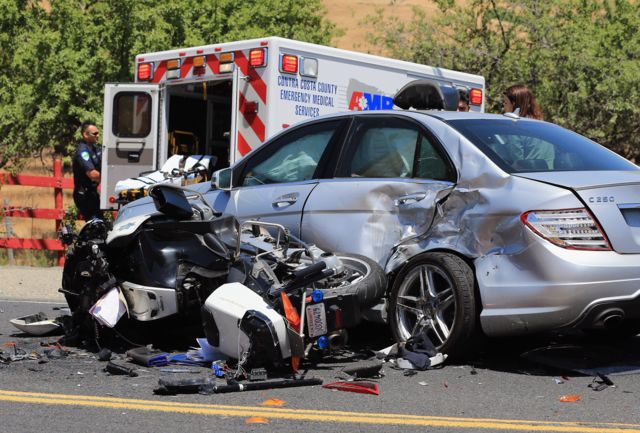Traffic Accidents: Concepts, Definitions and Characteristics

Conceptos, Definiciones y Características
Traffic accidents are unfortunate events that occur all too frequently around the world, causing loss of human life, serious injuries and property damage. These incidents, which involve moving vehicles, can have various causes and consequences. In this article, we will explore the fundamental concepts, definitions, and characteristics of traffic accidents.
Concepts and Definitions
Car accident:
A traffic accident refers to an unplanned event that involves at least one moving vehicle and can result in property damage, personal injury, or even death. These accidents can be caused by various factors, such as human error, adverse weather conditions, mechanical failure, and negligence in road maintenance.
Vehicle:
A vehicle is a means of transportation designed to move people or cargo from one place to another. It can include cars, motorcycles, trucks, buses, and any other motorized means of transportation.
Drivers:
Drivers are the people who operate the vehicles on the road. Your behavior and decisions behind the wheel play a crucial role in preventing traffic accidents.
pedestrians:
Pedestrians are individuals who move on foot on the roads. They have the responsibility to respect traffic signals and the right of way at crosswalks.
Characteristics of Traffic Accidents
Multifactorial Causes:
Traffic accidents often have multifactorial causes, which means that they are influenced by a combination of factors. These may include improper speed, alcohol consumption, mobile phone use while driving, failure to follow traffic signs, and driver fatigue. Identifying and addressing these causes is essential to prevent accidents.
Injuries and Losses:
Car accidents can result in a wide range of injuries, from minor injuries to serious and life-threatening injuries. In addition to personal injuries, accidents can also cause significant property damage to the vehicles involved and nearby property.
Economic consequences:
Traffic accidents have important economic repercussions for the parties involved. Medical costs, legal expenses, and lost productivity can create a significant financial burden. In addition, insurers and road authorities also incur expenses in accident management and road rehabilitation.
Demographic Risk Factors:
Some demographic groups may be at higher risk of being involved in traffic accidents. Young and inexperienced drivers, as well as older drivers, often face unique challenges on the road. Driver education aimed at these groups can help reduce accidents.
Preventive measures:
To reduce the incidence of traffic accidents, various prevention measures have been implemented. These include road safety awareness campaigns, enforcement of stricter traffic laws, improvements to road infrastructure such as clearer traffic signals and well-marked crosswalks, and promotion of the use of vehicle safety systems, such as seat belts. and airbags.
Conclusions
Traffic accidents are tragic and preventable events that affect people of all ages and backgrounds. Understanding the concepts, definitions and characteristics of these accidents is essential to effectively address this global problem. Through a combination of driver education, preventative measures and awareness, we can work together to reduce the incidence of traffic accidents and create safer roads for all.
Traffic Accidents: Concepts, Definitions and Strategies to Prevent Errors
Traffic accidents are events that can have devastating consequences, but can often be prevented with greater knowledge and awareness of the factors that contribute to their occurrence. In this article, we will delve into the concepts and definitions related to traffic accidents and explore effective strategies to avoid making mistakes behind the wheel.
Concepts and Definitions
Car accident:
A traffic accident refers to any collision or involuntary event that occurs on public roads and that involves at least one moving vehicle. It can result in property damage, personal injury, or even loss of life. These accidents can occur due to a variety of factors, such as adverse weather conditions, human error, negligence in vehicle and road maintenance, as well as violation of traffic regulations.
Contributing Factors:
The factors that contribute to traffic accidents are varied and often interrelated. These may include driver distraction, such as mobile phone use or eating while driving, inappropriate speed, consumption of alcohol or psychoactive substances, fatigue, non-compliance with traffic signs and regulations, and poor vehicle maintenance. .
Defensive Driving:
Defensive driving is a strategy that involves constantly being aware of potential road hazards and taking proactive steps to avoid accidents. This includes maintaining a safe distance from the vehicle in front, obeying traffic signals, avoiding distractions, adjusting your speed for road conditions, and being prepared to react to unexpected situations.
Strategies to Prevent Errors and Accidents
Avoid Distractions:
One of the main causes of traffic accidents is driver distraction. To avoid mistakes, it is essential to keep your attention on the road at all times. Avoid using your mobile phone, applying makeup or any other activity that diverts your attention while driving.
Respect the speed limits:
Improper speed is a significant risk factor in accidents. Obey posted speed limits and slow down in inclement weather or in areas with heavy traffic. Adjusting your speed to road conditions can make the difference between avoiding an accident and being involved in one.
Do Not Drive Under the Influence of Alcohol or Drugs:
Alcohol and drug use negatively affect a driver's ability to react appropriately. Never drive if you have consumed alcohol or substances that may impair your ability to drive safely.
Vehicle Maintenance:
Performing regular maintenance on your vehicle is essential to prevent mechanical failures that can cause accidents. Check your brakes, tires, lights, and steering systems periodically to ensure your vehicle is in top condition.
Continuing Driver Education:
Never underestimate the importance of driver education. Stay up to date on traffic rules and regulations. Take defensive driving courses and look for opportunities to improve your driving skills.
Conclusions
Traffic accidents are unfortunate events that affect many people around the world. However, by understanding the concepts, definitions and strategies to prevent errors, each individual can contribute to the reduction of accidents on the roads. Personal responsibility and a commitment to road safety are essential to creating a safer driving environment and preventing unnecessary tragedies.